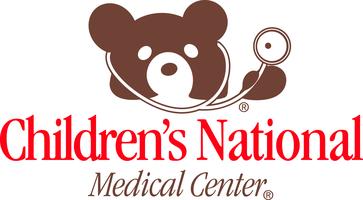Vinorelbine for Children With Progressive or Recurrent Low-grade Gliomas
| Status: | Active, not recruiting |
|---|---|
| Conditions: | Brain Cancer |
| Therapuetic Areas: | Oncology |
| Healthy: | No |
| Age Range: | Any - 18 |
| Updated: | 4/21/2016 |
| Start Date: | July 2011 |
| End Date: | July 2017 |
Phase 2 Study of Weekly Vinorelbine in Children With Progressive or Recurrent Low-Grade Gliomas
The purpose of this study is to investigate whether weekly Vinorelbine treatment can shrink
or slow the growth of pediatric low-grade gliomas that have either returned or are
continuing to grow.
Vinorelbine is a semi-synthetic vinca alkaloid that has recently generated interest in
patients with pediatric low-grade glioma. It has been specifically synthesized to broaden
its therapeutic spectrum and decrease the neurotoxicity associated with related agents.
or slow the growth of pediatric low-grade gliomas that have either returned or are
continuing to grow.
Vinorelbine is a semi-synthetic vinca alkaloid that has recently generated interest in
patients with pediatric low-grade glioma. It has been specifically synthesized to broaden
its therapeutic spectrum and decrease the neurotoxicity associated with related agents.
Different treatments exist for children with progressive or recurrent low-grade glioma. Each
has variable efficacy at slowing or reversing growth, and exploration continues into finding
better-tolerated, more effective treatments.
Vinorelbine has recently generated interest in stabilizing some pediatric low-grade gliomas.
It has been fairly well tolerated in both adult and pediatric studies that have examined its
use in other tumors.
Objective: To test the efficacy of Vinorelbine in children with pediatric low-grade glioma
that has returned or continues to grow.
In this trial, Vinorelbine will be given intravenously once a week for 6 weeks followed by a
2 week rest (6 of every 8 weeks) for one year. The patients will then be followed for 60
months. Progression free survival is the primary outcome and defined as the none of the
following: greater a 20% increase in the sun of the longest diameter of the target lesion,
or a measurable increase in a non-target lesion, or the appearance of new lesions.
has variable efficacy at slowing or reversing growth, and exploration continues into finding
better-tolerated, more effective treatments.
Vinorelbine has recently generated interest in stabilizing some pediatric low-grade gliomas.
It has been fairly well tolerated in both adult and pediatric studies that have examined its
use in other tumors.
Objective: To test the efficacy of Vinorelbine in children with pediatric low-grade glioma
that has returned or continues to grow.
In this trial, Vinorelbine will be given intravenously once a week for 6 weeks followed by a
2 week rest (6 of every 8 weeks) for one year. The patients will then be followed for 60
months. Progression free survival is the primary outcome and defined as the none of the
following: greater a 20% increase in the sun of the longest diameter of the target lesion,
or a measurable increase in a non-target lesion, or the appearance of new lesions.
Inclusion Criteria:
- Age: < 18 years
- Tumor: Progressive or recurrent low grade glioma, WHO grade 1 or 2 who have failed at
least one form of 'conventional' non-surgical therapy
- Histologic confirmation is required with the exception of optic pathway and brain
stem gliomas. Patients are not required to have a re-operation at time of recurrence.
- Patients with disseminated disease are eligible.
- Children with neuro-fibromatosis and optic pathway or brainstem tumors are eligible
but must have definitive radiologic or clinical evidence of progression
- Patients must have evidence of measureable disease
- Performance status: Karnofsky or Lansky performance status of >50%
- Organ Function:
- Adequate bone marrow function (ANC>1000/mm3, platelet count of >75,000/mm3, and
hemoglobin > 8gm/dL) prior to starting therapy. Hemoglobin may be supported by
transfusion
- Adequate liver function (SGPT/ALT<2.5 times ULN and bilirubin < 1.5 times ULN) prior
to starting therapy
- Prior therapy:
- May have had treatment including surgery, chemotherapy, or radiotherapy for any
number of relapses prior to enrollment
- Patients must have received their last fraction of radiotherapy >12 weeks prior to
starting therapy
- Previous Vincristine or Vinblastine exposure is allowable.
Exclusion Criteria:
- No other significant medical illness that in the investigators' opinion cannot be
adequately controlled with appropriate therapy or would compromise the patient's
ability to tolerate this therapy
- Any other cancer (except non-melanoma skin cancer), unless in complete remission and
off of all therapy for that disease for a minimum of 3 years.
- Patients of childbearing potential must not be pregnant or breast-feeding
(vinorelbine is a pregnancy category D, no data on excretion in breastmilk)
- Patients of childbearing or fathering potential must practice adequate contraception
We found this trial at
2
sites
Click here to add this to my saved trials
111 Michigan Ave NW
Washington, District of Columbia
Washington, District of Columbia
(202) 476-5000

Childrens National Medical Center As the nation’s children’s hospital, the mission of Children’s National Medical...
Click here to add this to my saved trials